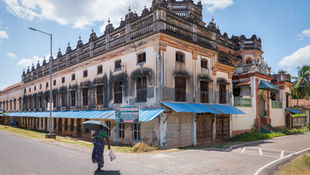Heritage is a complex term with different definitions depending on the perception of a person. It can be expressed in a variety of ways. For instance, the historic buildings of any place that have endured the test of time and are still standing strong in the face of disasters reflect the story of that city's architectural history. These historic structures are referred to as heritage buildings and they form a vital part of any civilization. Apart from these, there would be numerous other dilapidated buildings that carry the characteristics of a heritage site. Such places are called “heritage resources” and India is a vast country with countless heritage resources that need conservation and care.
So, what is a heritage resource? A heritage resource is any structure, object, artefact, or material that reflects the history of a place. They need to be conserved to promote the culture and tradition of the region. The Alappuzha heritage project is one such attempt aimed at conserving the dying heritage buildings of this old port town. This blog is a compilation of potential heritage resources identified by our team, in Alappuzha.
List of Contents
Alappuzha Customs Office
The Alappuzha customs office is located along the beach road near the boating centre. At present only a portion of it is being used as an office and the rest of the building is in a dilapidated condition. As the road level has risen over time, the structure has become inaccessible from the front, which is the building's main entrance. The heritage resource is built on a large parcel of land acquiring a good amount of frontage along the road. Therefore, it can be a major attraction to the visitors passing by. It is a single-story structure with an additional sloping roof to the north facade. The materials used are Mangalore tiles for the roof and laterite blocks for the walls. At present, it is a dilapidated building and shows signs of distress.

Port Building
The Port Building is located along the beach road, near the Tourist Protection Center. This heritage building was used as a port building, which is presently abandoned. But once upon a time, it must have been one of the most important buildings for trade purposes. The traces of old railway tracks along with the building, with the street lamps leading the way to the Supplycogodowns from the sea pier, this spot has tremendous potential. The architectural style of this heritage resource is a blend of Kerala architecture and Colonial architecture. The built form is a rectangular plan and is a double-storey load-bearing structure with a traditional sloping roof. The materials used are Mangalore tiles for the roof and laterite blocks for the walls. At present, it is a dilapidated building, in a state of decay. Major threats to the heritage building are negligence due to lack of awareness and growth of natural vegetation. A high compound wall is recently built in front of the building which is obstructing the view of the structure from the street and the beach.



Mullakkal Temple
The Mullakkal temple is found along the Mullakkal road, near an Axis Bank. It is one of the most popular Temples of Alleppey, built in old Kerala temple architecture style. The temple is also known as Mullakkal Bhagwati Temple and is presently run by the Travancore Devaswom Board in Alleppey. It has a huge premise with many smaller side temples, a beautiful pond and plenty of trees. The architecture is elegantly done with intricate details and a nice composition of the built structures. The temple doors open onto a wide courtyard with a corridor in the centre that leads to the sanctum. It is a unique temple with no roof over the sanctum sanctorum and the diety is exposed to sun and rain. The temple walls are embraced by rows of oil lamps to illuminate the grounds.




Private Residence
A private residence, along beach road near the District hospital, can be a potential heritage resource, if preserved. It is a beautiful private residence with a large compound, presently in a dilapidated condition and not in use. The heritage resource is typical of many of the other historic buildings in Alleppey. The building is a double storied load-bearing structure with a traditional sloping roof made of Mangalore tiles. It predominantly showcases characteristics of Kerala architecture while the semicircular arches on the front porch indicate a touch of Colonial architecture. The residence is set behind a vast front yard.


Conclusion
Heritage buildings are like written documents depicting the rich tradition and history of the past. However, nowadays they are not given the proper care they deserve and are destroyed without any thought. All heritage buildings need to be conserved so that their memories and rich heritage can be passed on to future generations. It is equally important to identify other less known heritage resources, and conserve them effectively so that they can be used to improve the culture, tradition, and tourism of a place.
Visit other articles on Heritage:















Comments